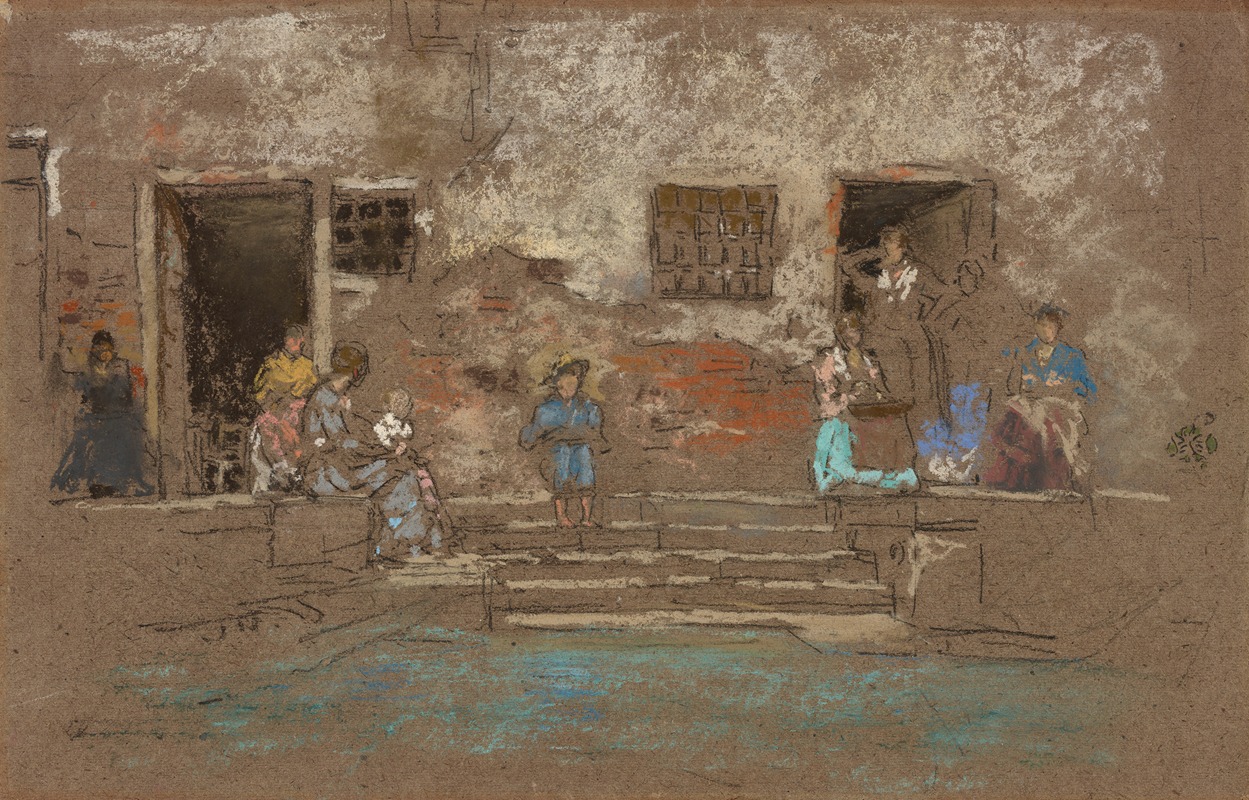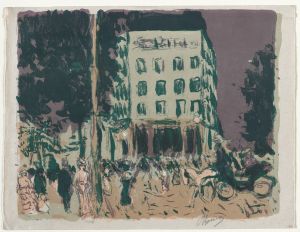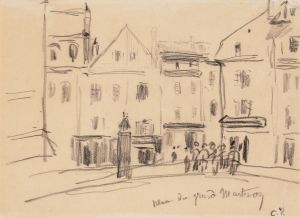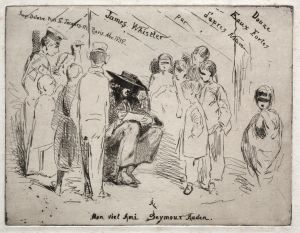
The Steps
A hand-painted replica of James Abbott McNeill Whistler’s masterpiece The Steps, meticulously crafted by professional artists to capture the true essence of the original. Each piece is created with museum-quality canvas and rare mineral pigments, carefully painted by experienced artists with delicate brushstrokes and rich, layered colors to perfectly recreate the texture of the original artwork. Unlike machine-printed reproductions, this hand-painted version brings the painting to life, infused with the artist’s emotions and skill in every stroke. Whether for personal collection or home decoration, it instantly elevates the artistic atmosphere of any space.
James Abbott McNeill Whistler was an American artist known for his significant contributions to the art world during the 19th century. One of his notable works is "The Steps," a painting that exemplifies his unique style and artistic philosophy. Whistler was a proponent of "art for art's sake," a movement that emphasized the aesthetic value of art over its narrative content or moral message. This philosophy is evident in "The Steps," where Whistler's focus is on composition, color, and mood rather than a detailed storyline.
"The Steps" was created during a period when Whistler was deeply influenced by the artistic movements in Europe, particularly the Aesthetic Movement and Impressionism. His work often reflected a blend of these influences, characterized by a subtle use of color and a focus on the harmony of the composition. Whistler's technique involved a delicate balance of light and shadow, which he used to create atmospheric effects that were both evocative and innovative for his time.
In "The Steps," Whistler employs a muted color palette, a hallmark of his style, which contributes to the painting's overall sense of tranquility and introspection. The composition is carefully arranged to draw the viewer's eye through the scene, encouraging a contemplative engagement with the work. Whistler's attention to detail and his ability to capture the essence of a moment are evident in the way he renders the figures and their surroundings.
The painting is also notable for its use of perspective and spatial arrangement. Whistler's skillful manipulation of these elements creates a sense of depth and movement, inviting the viewer to step into the scene. This technique reflects his interest in Japanese art, which he admired for its simplicity and elegance. The influence of Japanese prints is apparent in the way Whistler handles space and form, creating a composition that is both balanced and dynamic.
Whistler's work, including "The Steps," was often met with mixed reactions from critics and the public. While some praised his innovative approach and mastery of technique, others were less appreciative of his departure from traditional artistic norms. Despite this, Whistler's contributions to the art world were significant, and his work has continued to be studied and admired for its originality and impact.
"The Steps" is a testament to Whistler's artistic vision and his ability to convey emotion and atmosphere through his paintings. It remains an important piece in the study of 19th-century art, illustrating the transition from traditional to modern approaches in painting. Whistler's legacy is evident in the way his work has influenced subsequent generations of artists, and "The Steps" is a prime example of his enduring impact on the art world.


















